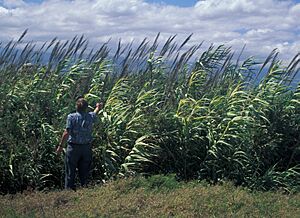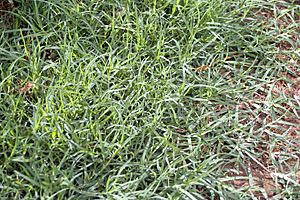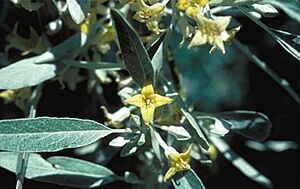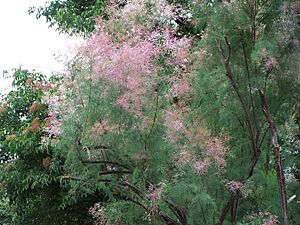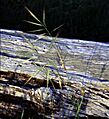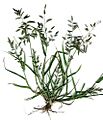List of invasive plant species in Arizona facts for kids
Many plants have been brought to Arizona from other places. Some of these plants are called introduced species. When these introduced plants cause harm to the environment, they become invasive species. Invasive plants can take over areas and push out the native plants that naturally grow there.
Contents
Invasive Plants in Arizona
What Are Invasive Plants?
Introduced species are plants or animals that people bring to a new place. This can happen on purpose, like when farmers plant new crops. It can also happen by accident, such as seeds hitching a ride on a car.
An invasive species is an introduced species that causes problems. These problems can be for the environment, the economy, or even human health. In Arizona, many invasive plants are a big concern. They can change the natural landscape and harm native wildlife.
Why Are Invasive Plants a Problem?
Invasive plants can cause many issues in Arizona's unique environment:
- Taking Over Space: They grow very fast and spread quickly. This means they can crowd out native plants. Native plants are those that have grown in Arizona for thousands of years.
- Using Up Resources: Invasive plants often use a lot of water. This is a big problem in a desert state like Arizona. They can also take nutrients from the soil. This leaves less for native plants.
- Changing Habitats: When invasive plants take over, they change the natural homes for animals. Animals that depend on native plants for food or shelter might struggle to survive.
- Increasing Fire Risk: Some invasive grasses dry out quickly. This creates more fuel for wildfires. This can make fires more frequent and intense.
- Economic Costs: It costs a lot of money to try and remove invasive plants. This money could be used for other important things.
Common Invasive Plants in Arizona
Arizona faces challenges from many different invasive plants. Here are a few examples:
Giant Cane (Arundo donax)
Giant cane is a very tall grass that looks a bit like bamboo. It can grow up to 20 feet high! It loves to grow along rivers and streams. When it takes over, it forms dense thickets. These thickets push out native plants like willows and cottonwoods. It also uses a lot of water. This is a big problem for Arizona's limited water supply. It can also increase the risk of wildfires.
Bermuda Grass (Cynodon dactylon)
You might know Bermuda grass from lawns or sports fields. It was brought to Arizona for these uses. However, it can easily escape and become invasive. It spreads very quickly with strong roots. It forms a thick mat that chokes out other plants. It is very hard to get rid of once it takes hold.
Russian Olive (Elaeagnus angustifolia)
The Russian olive is a tree with silvery leaves and small, olive-like fruits. It was planted for shade and to help stop soil erosion. But it has become a major problem along rivers. It grows very fast and forms dense stands. This pushes out native trees. Its roots can also change the soil. This makes it harder for other plants to grow.
Saltcedar (Tamarix ramosissima)
Saltcedar, also known as tamarisk, is a shrub or small tree. It was brought to Arizona in the 1800s. It was used to stabilize soil and for ornamental planting. It has become one of the most widespread invasive plants. It grows very well in salty soils. It also takes up a lot of water. It can even make the soil saltier, which harms native plants.
What Can We Do?
Dealing with invasive plants is a big job. Here are some ways people are helping:
- Learning More: Understanding which plants are invasive is the first step.
- Removing Them: Volunteers and land managers work to pull out or remove invasive plants.
- Planting Native Species: Choosing native plants for gardens helps support local wildlife. It also reduces the spread of invasive plants.
- Being Careful: Make sure not to accidentally spread invasive seeds. Clean your shoes and gear after hiking.
By working together, we can help protect Arizona's beautiful natural areas from invasive plants.
See also
- Invasive species in the United States
Images for kids


